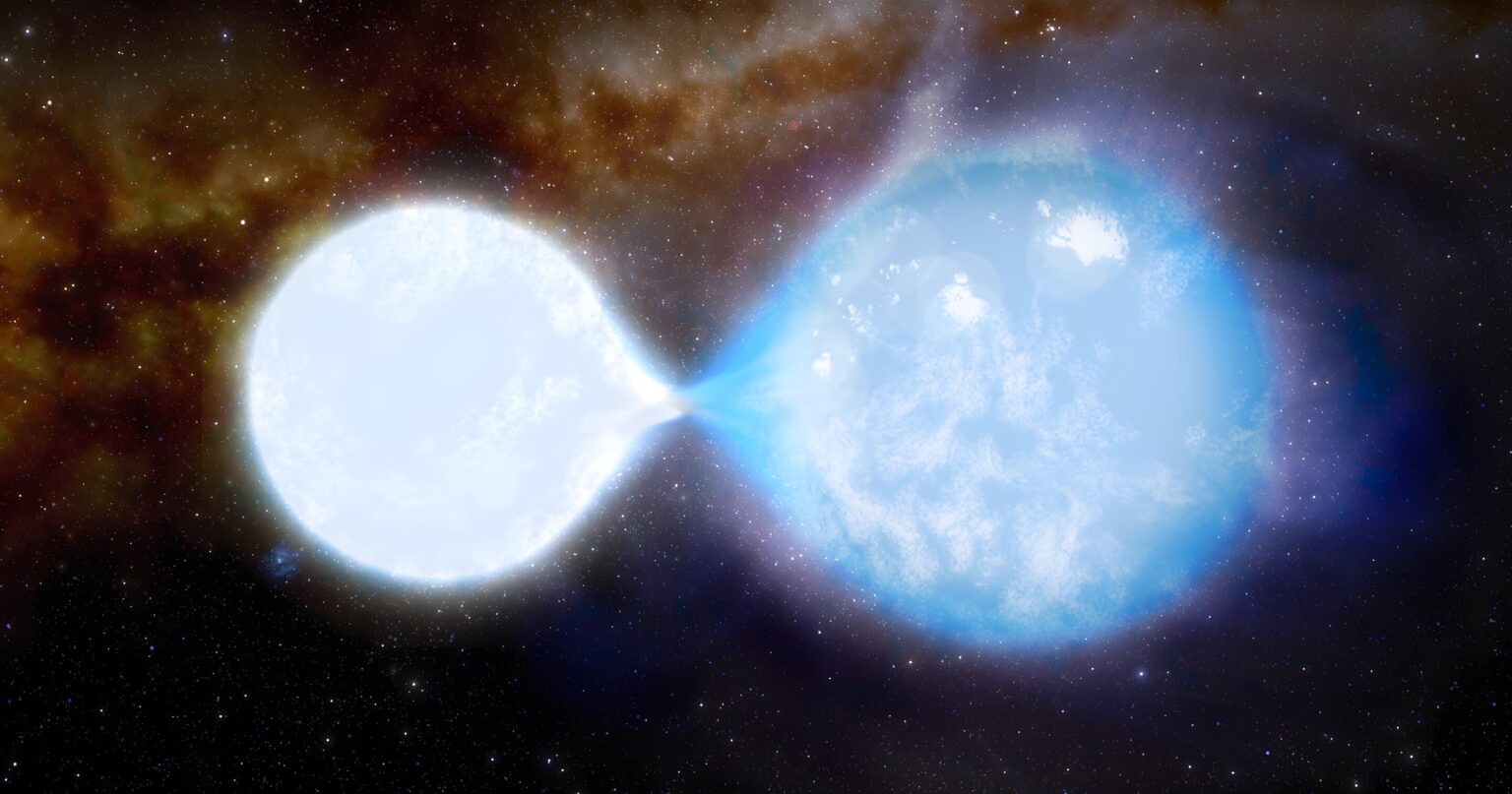Scientists have found two of the most famous stars in the neighboring galaxy, which are so close to each other that matter flows between them. Scientists are sure that in the future both of them will turn into black holes, and in billions of years they will merge, giving rise to gravitational waves.

Contact pair of stars
Scientists from University College London and the University of Potsdam recently found the largest known pair of stars touching each other. They are located in the Small Magellanic Cloud, a neighboring galaxy that is 210 thousand light-years away from us.
The bigger of the two stars has a mass of 55 solar, and the smaller is 32 times heavier than our luminary. Together, they orbit around a common center of mass in just three days. The distance between them is so small that there is an exchange of matter between them.
Matter flows from a smaller star to a larger one. In their study, the scientists studied various ranges of electromagnetic radiation coming from a binary star using data obtained over several time periods by instruments on NASA’s Hubble Space Telescope (HST) and Multi Unit Spectroscopic Explorer (MUSE) on a Very Large Telescope in Chile.
What happens next?
Thanks to the research, scientists were able to accurately determine the masses of stars and the parameters of their orbit. It turned out that the outer shells of the smaller of the luminaries had already been torn off. Astrophysicists compared these data with available models and came to the conclusion that in just 700 thousand years it would flare up as a supernova and turn into a black hole.
After that, for about 3 million years, the remaining star and the black hole will coexist together relatively peacefully. However, the evolution of the larger star will continue, it will begin to inflate and the black hole that formed from the smaller star will begin to take revenge by absorbing matter.
This will last only 200 thousand years before the big star turns into a black hole. A pair of singularities will continue to orbit each other for another 18 billion years before merging and generating gravitational waves at the same time.
Previously, scientists working on the Virgo and LIGO gravitational wave detectors have repeatedly recorded such events. But they came from pairs that turned into black holes billions of years before these events at the beginning of the Universe. In this regard, a binary star in the Small Magellanic Cloud represents a unique opportunity to see the beginning of this process.
According to phys.org
Follow us on Twitter to get the most interesting space news in time
https://twitter.com/ust_magazine

